.
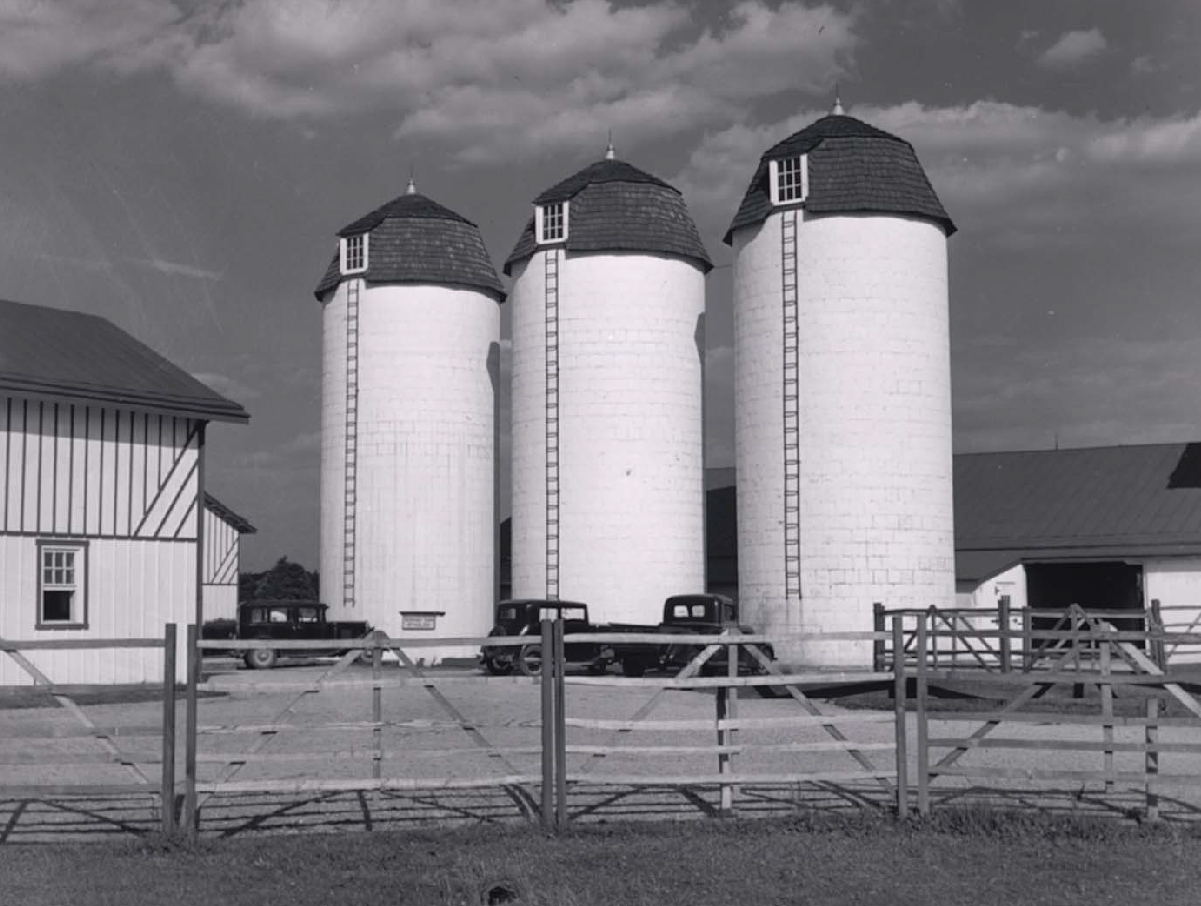
Barn and silos on rich farmland, Bucks County, Pennsylvania: photo by Marion Post Wolcott, 1939 (Farm Security Administration/Office of War Information Collection, Library of Congress/Smithsonian Museum of American Art)

Proprietor of a poolhall playing cards, Woodstock, Vermont: photo by Marion Post Wolcott, 1939 (Farm Security Administration Collection, Library of Congress/Smithsonian Museum of American Art)
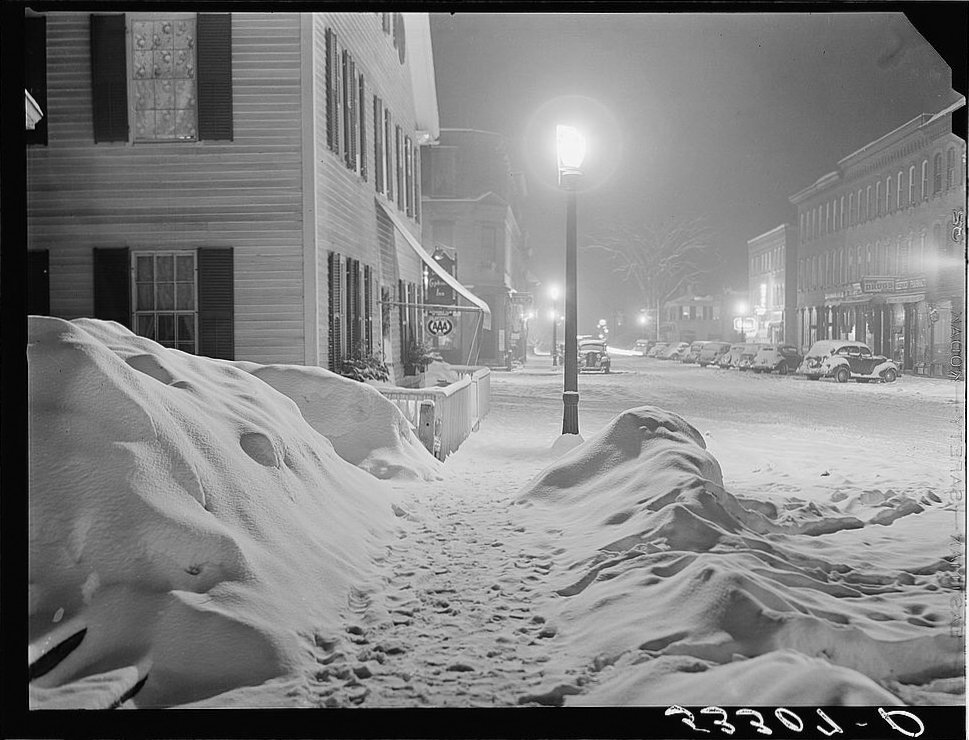
Center of town, Woodstock, Vermont. Snowy night: photo by Marion Post Wolcott, March 1940 (Farm Security Administration/Office of War Information Collection, Library of Congress)

African American man pedaling a pedicab in front of Cartier storefront on Hibiscus Avenue, Palm Beach, Florida: photo by Marion Post Wolcott, March 1939 (Farm Security Administration Collection, Library of Congress/Schomburg Center for Research in Black Culture, New York Public Library)
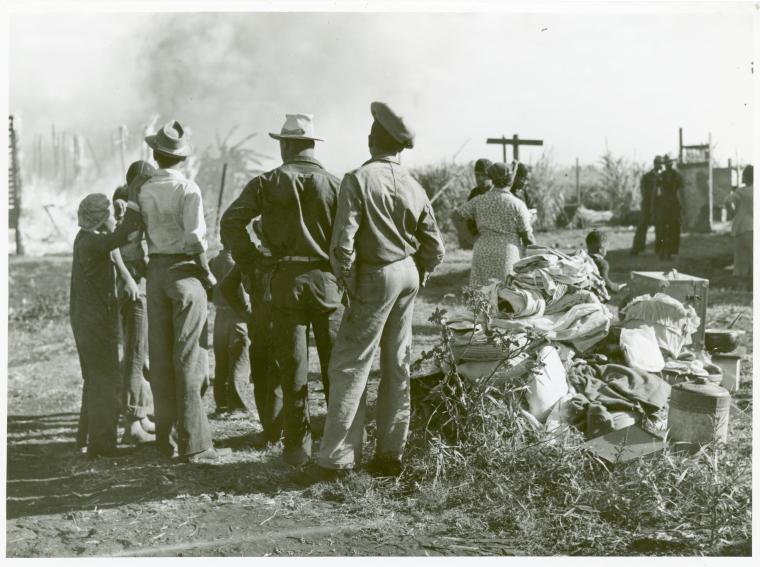
Negro agricultural laborers watching one of their houses burn to the ground; all they have left is piled on the ground. Lake Harbor, Palm Beach County, Florida: photo by Marion Post Wolcott, January 1939 (Farm Security Administration Collection, Library of Congress/Schomburg Center for Research in Black Culture, New York Public Library)

Migrant family from Missouri camping out in cane brush. One woman said, ""We ain't never lived like hogs before, but we sure does now". Canal Point, Florida: photo by Marion Post Wolcott, 1939 (Farm Security Administration Collection, Library of Congress/Smithsonian Museum of American Art)

Couple carrying home groceries and kerosene on horseback, Kentucky mountains: photo by Marion Post Wolcott, 1940 ( (Farm Security Administration Collection, Library of Congress/Smithsonian Museum of American Art)
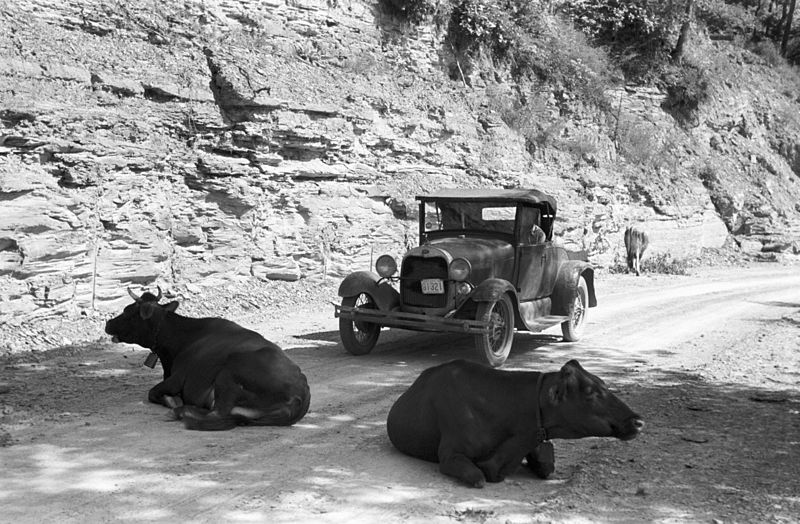
One of the hazards of driving over Kentucky mountain roads. Near Jackson, Breathitt County, Kentucky: photo by Marion Post Wolcott, July 1940 (Farm Security Administration/Office of War Information Collection, Library of Congress)

School children rehearsing Maypole festivity in Gee's Bend, Alabama: photo by Marion Post Wolcott, May 1939 (Farm Security Administration/Office of War Information Collection, Library of Congress)

Old cable ferry between Camden and Gee's Bend, Alabama: photo by Marion Post Wolcott, May 1939 (Farm Security Administration/Office of War Information Collection, Library of Congress)

Street in Wolf Point, Montana (100 Block of 3rd Avenue South): photo by Marion Post Wolcott, September 1941 (Farm Security Administration/Office of War Information Collection, Library of Congress)

Saturday night at the bar, Birney, Montana: photo by Marion Post Wolcott, August 1941; image by vielles_annonces, 18 December 2011 (Farm Security Administration/Office of War Information Collection, Library of Congress)

Signs behind the bar, Birney, Montana: photo by Marion Post Wolcott, August 1941 (Farm Security Administration/Office of War Information Collection, Library of Congress)
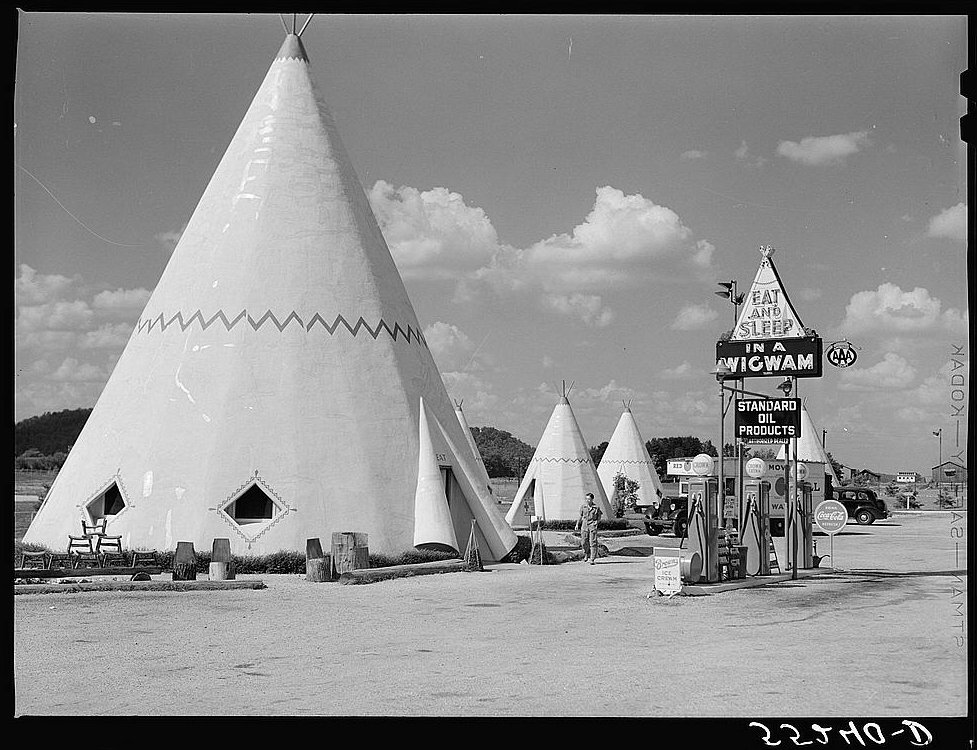
Wigwam Village #2, Cave City, Kentucky. Cabins for tourists imitating the Indian teepee. Along highway south of Bardstown, Kentucky: photo by Marion Post Wolcott, July 1940 (Farm Security Administration/Office of War Information Collection, Library of Congress)
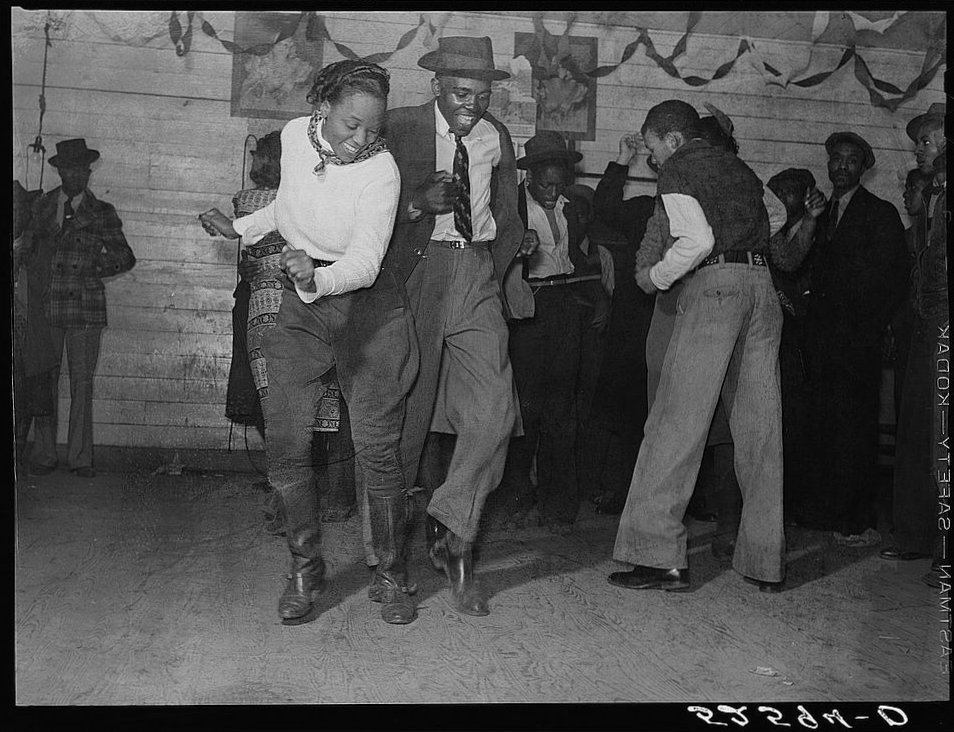
Jitterbugging in Negro juke joint, Saturday evening, outside Clarksdale, Mississippi: photo by Marion Post Wolcott, November 1939 (Farm Security Administration/Office of War Information Collection, Library of Congress)

Juke joint drummer, Beale Street, Memphis, Tennessee: photo by Marion Post Wolcott, October 1939 (Farm Security Administration Collection, Library of Congress/Schomburg Center for Research in Black Culture, New York Public Library)

Beale Street, Memphis, Tennessee: photo by Marion Post Wolcott, October 1939 (Farm Security Administration/Office of War Information Collection, Library of Congress)

Secondhand clothing stores and pawn shops on Beale Street, Memphis, Tennessee: photo by Marion Post Wolcott, October 1939 (Farm Security Administration/Office of War Information Collection, Library of Congress)

Coal miners going home from work, Omar, West Virginia: photo by Marion Post Wolcott, September 1938 (Farm Security Administration Collection, Library of Congress/Schomburg Center for Research in Black Culture, New York Public Library)
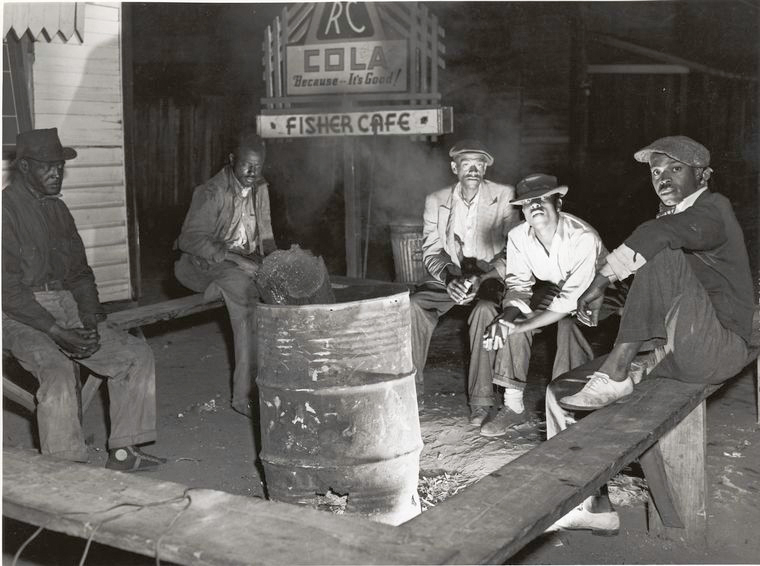
Negro laborers sitting in front of a fire on Saturday night in a street in the Negro quarter, Belle Glade, Florida: photo by Marion Post Wolcott, January 1940 (Farm Security Administration Collection, Library of Congress/Schomburg Center for Research in Black Culture, New York Public Library)
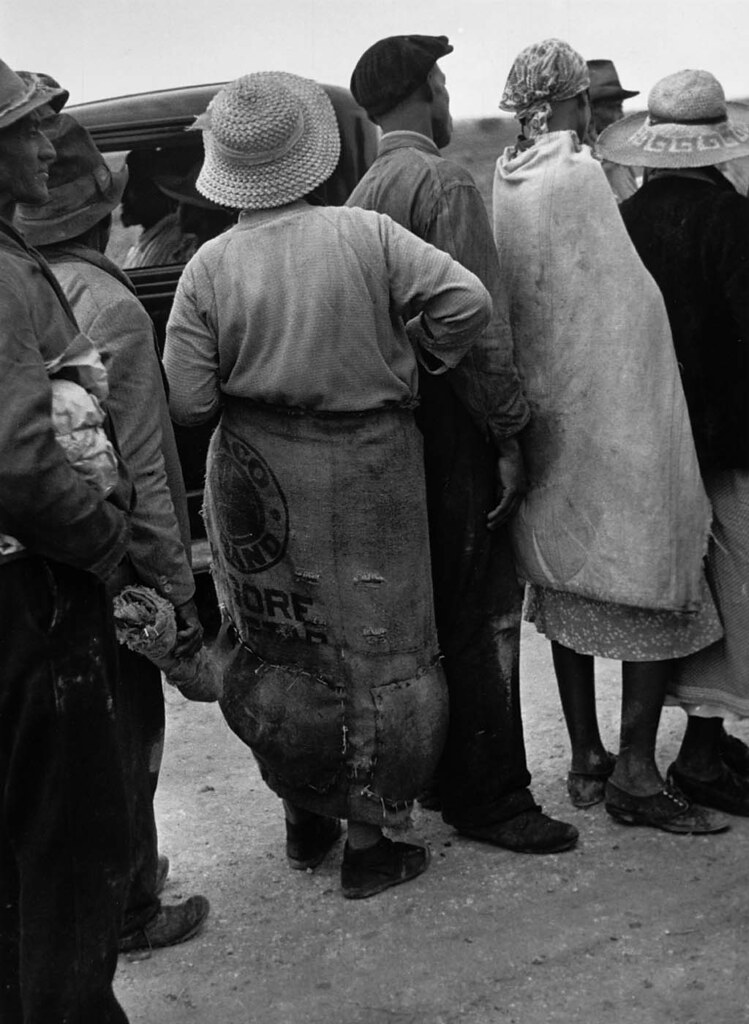
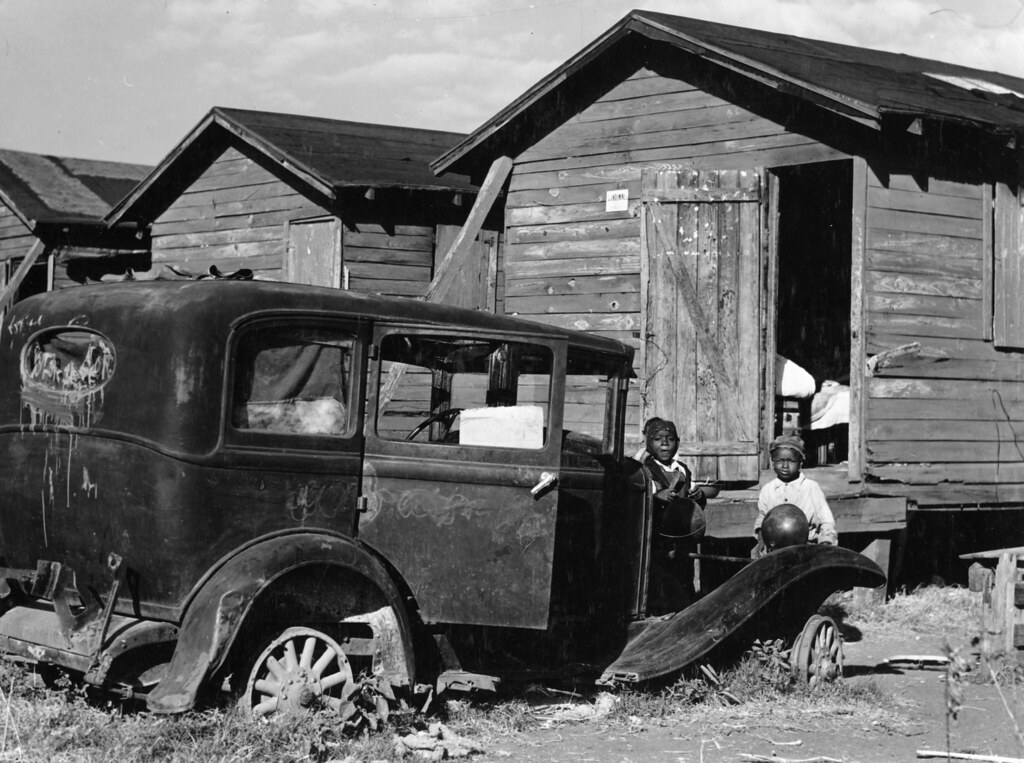
Houses condemned by Board of Health still lived in by migratory laborers. Belle Glade, Florida: photo by Marion Post Wolcott, January 1941; image by The Patrick Montgomery Collection/The History of Photography Archive, 18 April 2011 (Farm Security Administration/Office of War Information Collection, Library of Congress)
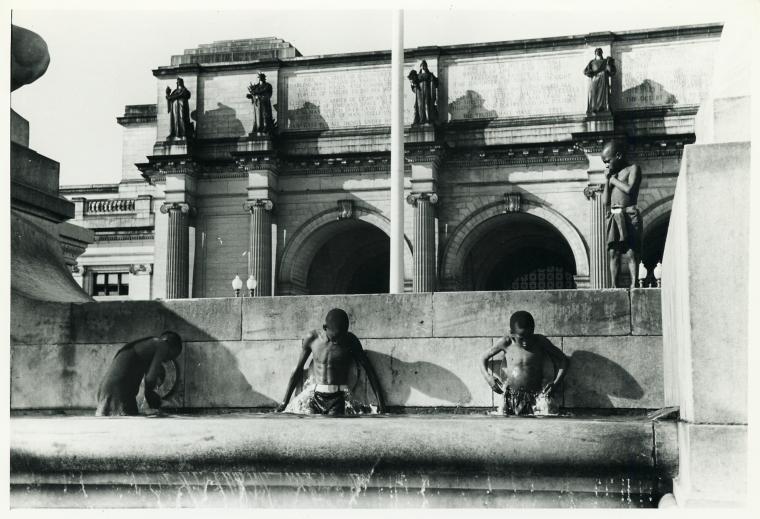
Swimming in fountain across from Union Station, Washington, D. C.: photo by Marion Post Wolcott, September 1938 (Farm Security Administration Collection, Library of Congress/Schomburg Center for Research in Black Culture, New York Public Library)

Beale Street, Memphis, Tennessee: photo by Marion Post Wolcott, October 1939 (Farm Security Administration Collection, Library of Congress/Schomburg Center for Research in Black Culture, New York Public Library)

Negro going in colored entrance of movie house on Saturday afternoon, Belzoni, Mississippi Delta, Mississippi: photo by Marion Post Wolcott, October 1939 (Farm Security Administration/Office of War Information Collection, Library of Congress)
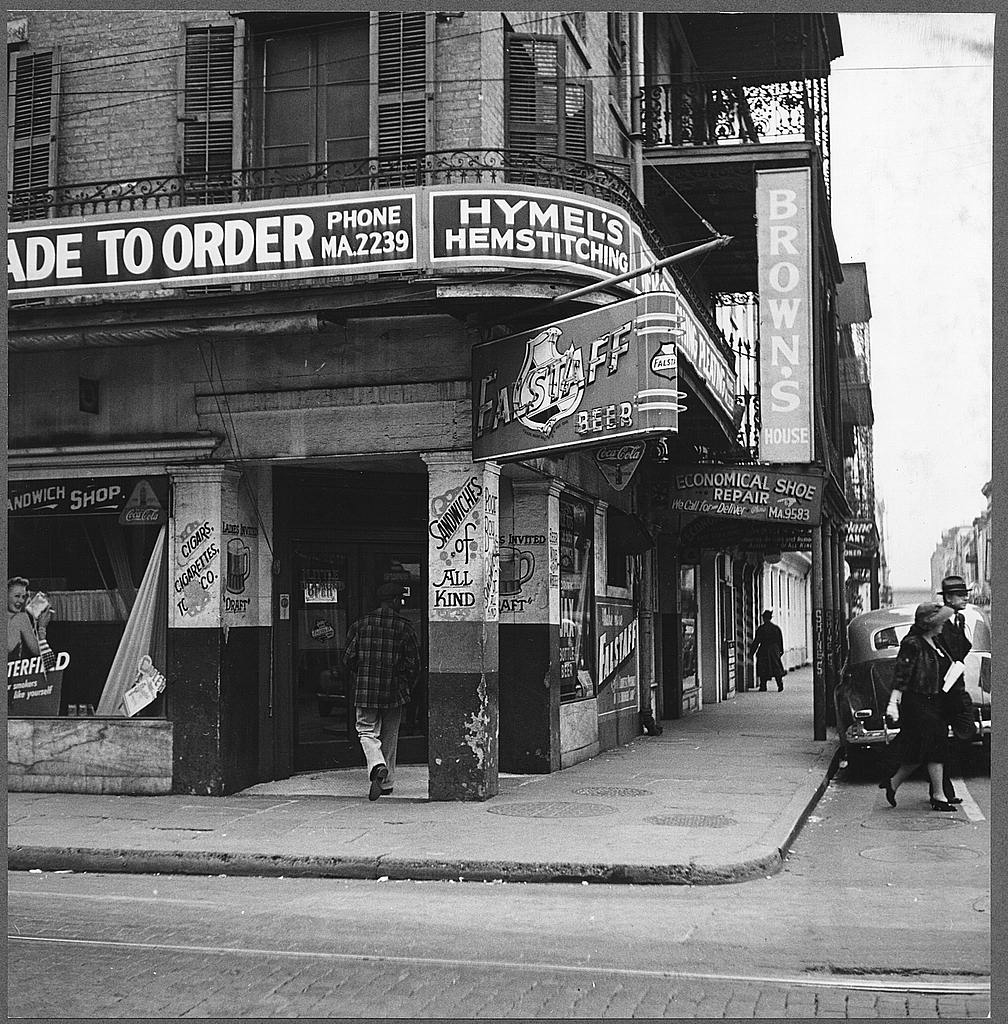
Old buildings in New Orleans, Louisiana. Downtown river corner of Bourbon and Iberville Streets, French Quarter: photo by Marion Post Wolcott, January 1941; image by imperturbe, 21 January 2009 (Farm Security Administration/Office of War Information Collection, Library of Congress)

"Old Absinthe House", French Quarter, New Orleans: photo by Marion Post Wolcott, January 1941 (Farm Security Administration/Office of War Information Collection, Library of Congress)

"Spanish" (probably Louisiana Isleño) muskrat trappers have a round of drinks after each lot is sold at the fur auction held in a dance hall on Delacroix Island, Louisiana: photo by Marion Post Wolcott, January 1941 (Farm Security Administration/Office of War Information Collection, Library of Congress)

"Spanish" (probably Louisiana Isleño) trapper and his children taking muskrat pelts into the FSA (Farm Security Administration) auction sale which is held in a dancehall on Delacroix Island, Louisiana. The fur buyers come from New Orleans: photo by Marion Post Wolcott, January 1941 (Farm Security Administration/Office of War Information Collection, Library of Congress)

Grading muskrat pelts while fur buyers and "Spanish" (probably Louisiana Isleño) trappers look on, during auction sale on porch of community store in Delacroix Island, Saint Bernard Parish, Louisiana The fur buyers come from New Orleans: photo by Marion Post Wolcott, January 1941 (Farm Security Administration/Office of War Information Collection, Library of Congress)
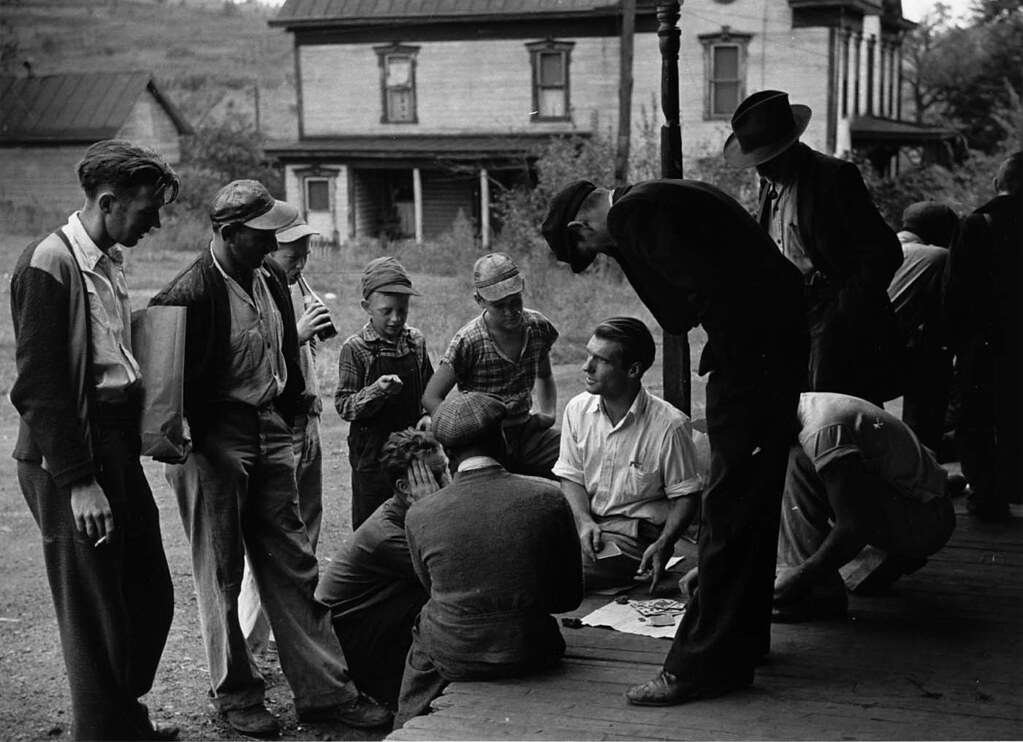
Coal miners' card game on the porch, Chaplin, West Virginia: photo by Marion Post Wolcott, 1938 (Farm Security Administration Collection, Library of Congress/Smithsonian Museum of American Art)
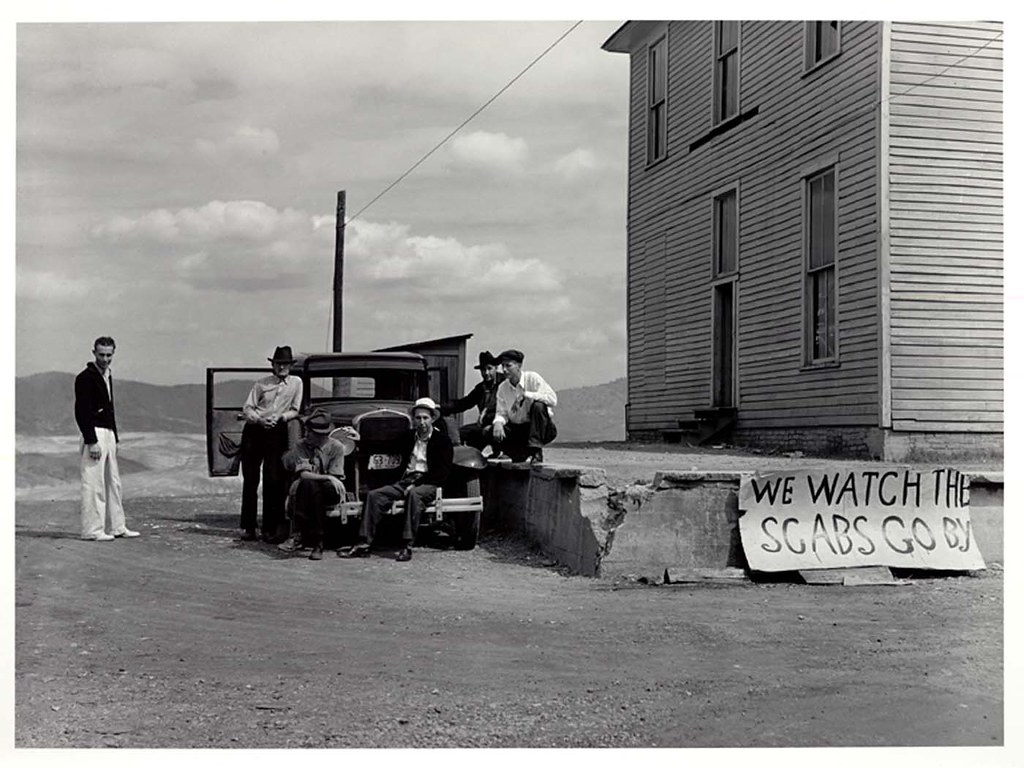
Picketing copper miners on strike waiting for the "scabs" to come out of the mine. Ducktown, Tennessee: photo by Marion Post Wolcott, 1939 (Farm Security Administration Collection, Library of Congress/Smithsonian Museum of American Art)
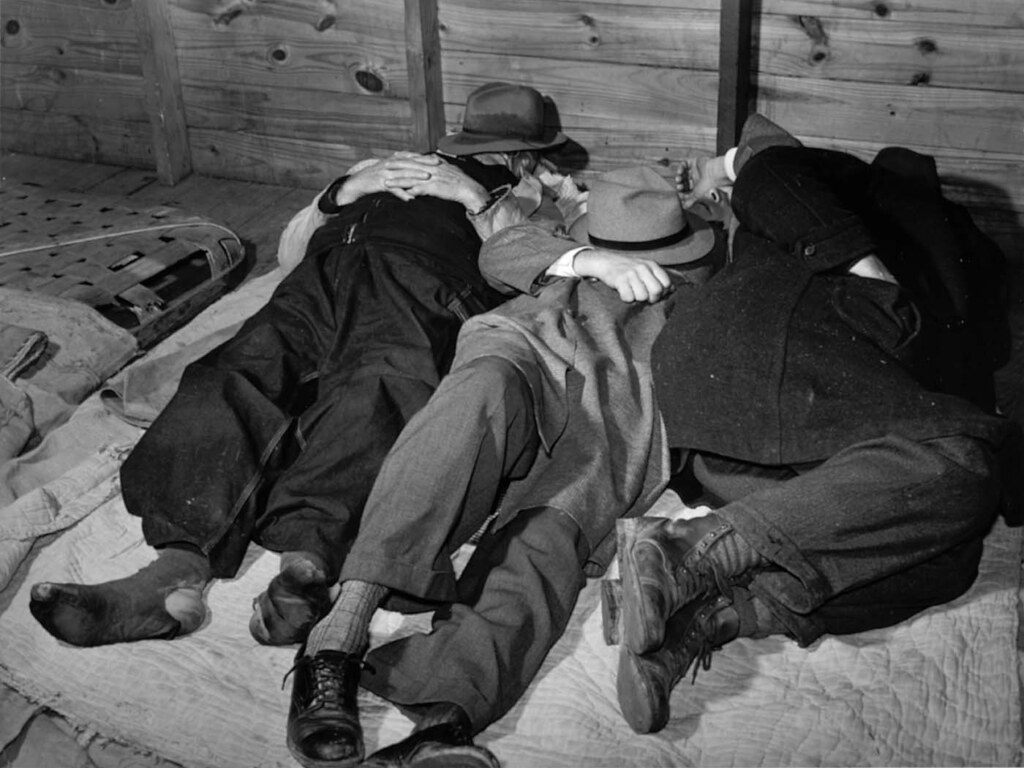
Farmers sleeping in a "white" camp room in a warehouse. They often must wait several days before their tobacco is sold. Durham, North Carolina: photo by Marion Post Wolcott, 1938 (Farm Security Administration Collection, Library of Congress/Smithsonian Museum of American Art)
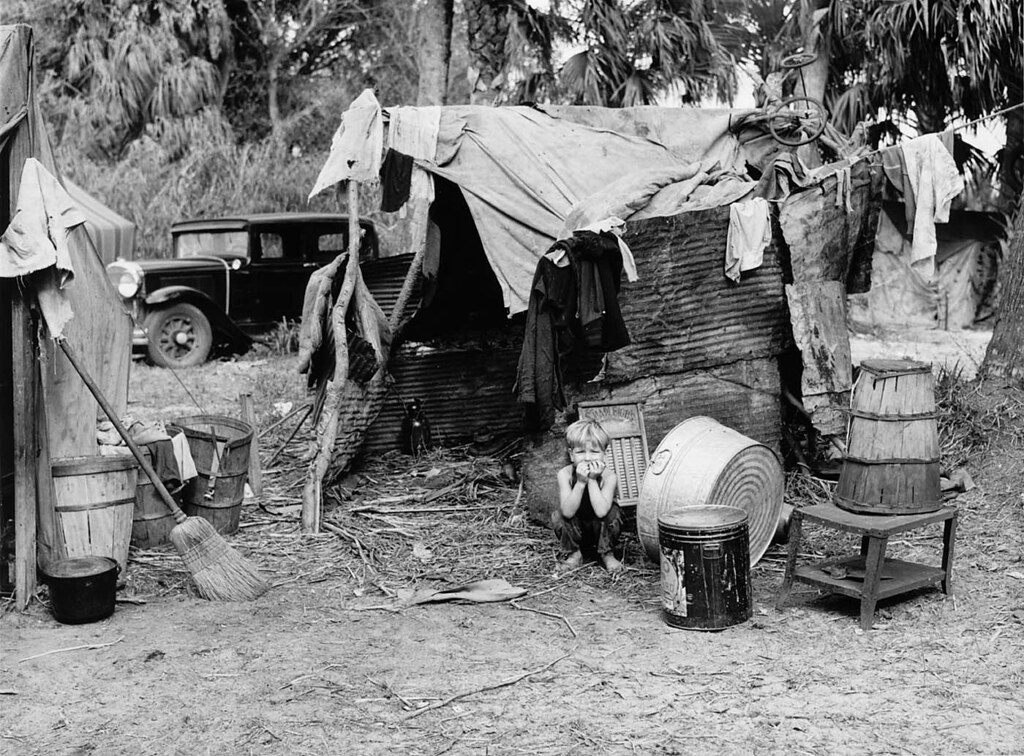
Child in doorway of shack of migrant pickers and packing house workers. Near Belle Glade, Florida: photo by Marion Post Wolcott, 1939 (Farm Security Administration Collection, Library of Congress/Smithsonian Museum of American Art)

Members of the Primitive Baptist Church in Morehead, Kentucky, attending a creek baptizing by submersion: photo by Marion Post Wolcott, August 1940 (Farm Security Administration/Office of War Information Collection, Library of Congress)


Marion Post letter of application for work, to Farm Security Administration Information Division Director Roy Stryker, 26 June 1938 (Special Collections Photographic Archives, University of Louisville Library)

Roy Emerson Stryker [1893-1975], Farm Security Administration Information Division Director during the Great Depression: photo by John Collier, December 1941 (Farm Security Administration Collection, Library of Congress)



Farm Security Administration Information Division Director Roy Stryker to Marion Post, 14 July 1938 (Special Collections Photographic Archives, University of Louisville Library)
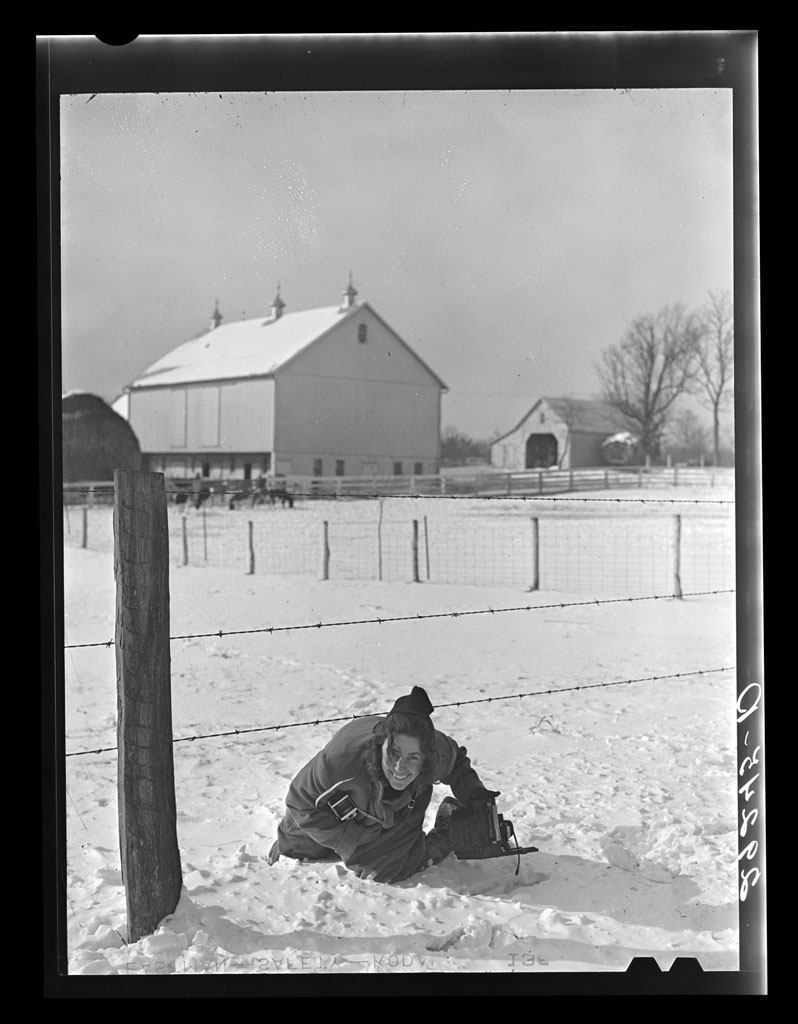
Marion Post Wolcott [1910-1990] with Rolleiflex and Speed Graphic in hand, Montgomery County, Maryland: photo by Arthur Rothstein, January 1940 (Farm Security Administration Collection, Library of Congress)



10 comments:
Little things that jumped out
in those photos:
# 6 - young girl on right, has no socks
#15 - the joy of jitterbugging, those smiles!
#21 - woman in a flour sack, branded
#33 - two sleep in shoes, one doesn't
The Vermont street scene looks like my street outside today, only the piles are higher :)
Thanks, Tom!
Annie,
Thanks so much for that. A good close eye like yours is what Marion Post's work was made for -- giving each picture the attention it demands of anyone who cares.
These images were (obviously) obtained one by one, and under problematic conditions in many cases. Nothing like now, where a robotic arm could take a picture as easily as any human.
#6 "young girl on right, has no socks" -- And it appears her sister (next to her) has none either. As to their mother, we can't see her feet, but socks would be a wonderment. One can't imagine the trouble she's seen.
It's always a small shock to turn from the custom of common conveniences that most people enjoy routinely now, to see images like these, and get a sense of the strength it took in those circumstances to maintain a bit of dignity in the face of a relentless wave of everyday difficulty. The father, with head bowed, shows us another aspect of the humiliation which poverty imposes.
#21 "woman in a flour sack, branded" -- She's the center of the post. Are those shoes she has on, or socks? Two persons further up in line, another no-socks woman. Behind the flour sack woman, laces dangling loose from man's shoes.
#33 "two sleep in shoes, one doesn't" -- Well, the two have at least untied the their laces, a small comfort. The ragged state of the socks of the no-shoes sleeper hints of the probable equally religious (=holey) state of his shoes.
But #15 -- "the joy of jitterbugging" -- she's got a fine pair of leather riding boots, for tripping the light fantastic, those smiles!
It's beautiful to know someone has taken the trouble to look with such care at the work of this marvelous photographic artist, who never sought fame for herself and therefore of course never got it.
Though Dorothea Lange became the "iconic" woman photographer of the FSA group, one always has to remember that Lange did it the Hertz way -- left the driving to someone else. Whereas Marion Post was the ultimate DIY kid in the pack.
Marion Post Wolcott: A Modern Gypsy in an Automobile
From the Robert W. Snyder article excerpted at the bottom of that post:
"Although Post took considerable pride in not being what she herself called a 'sissy,' she also discovered that traveling alone in the rural South was very risky and frightening. She reported that after dark everything closed up, and people went to bed, leaving only drunk and tough bums and derelicts on the prowl. 'If anything goes wrong you’re just out of luck,' she wrote from Montezuma, Georgia, 'and no one understands it if a girl is out alone after dark -- believe it or not.' [FSA Historical Section director Roy] Stryker had earlier instructed her to stay off the roads and remain indoors after sunset. 'I would feel very upset if anything should happen to you while doing our work,' the director had informed her. 'To hell with the work when night comes. Find yourself a nice safe place and settle down.' Both Post and Stryker agreed that evenings should be safely spent checking equipment, changing and packing supplies, captioning photographs, and planning the next day’s itinerary. Post enjoyed driving her convertible around the South with the top down, drinking in the bright sunshine during the day and the pleasant breeze in the evening. But she found that some people confused the deep brown tan she acquired with minority group membership, while others saw her as a loose woman. 'I’d at least like to be able to go for a little ride in the country with the top down on the car,' she complained while driving through Morehead, Kentucky, 'but good girls in the mountains in this country don’t ever ride around after dark! And since I’m trying to make a "good" first impression, I must do as the natives do. Ain’t it awful.'”
Morehead, Kentucky by the way is the site of that wading-in-the water brother-where-art-thou baptism scene {#35) I picked out to title the post.
But of course the phrase has another sense; the photos selected here represent Post's baptism as a serious artist, working with black and white in her early outings. (Her FSA colour work would instantly make her the house Kodachrome Queen; I think the short stocks of Kodachrome were reserved for those who used it best, and Post seems to have got the share her abilities deserved; quality of production not dimension of reputation determined your allotment -- happily for us all who would wish to grasp the reality of the world that made us what we are.)
The sharp dressers in the jitterbugging photos bring to mind Peter Meaden's definition of the term "Mod": "clean living under difficult circumstances".
That tough little picket with the plain sign.
Great photos. Every figure is alive.
Yes, good analogy. A righteous pride may make its statement with small means, against whatever weather.
That picket group was protesting conditions in the foul mines of the Tennessee Copper Basin, which were killing all vegetation for miles around by covering everything in a noxious deposit of sulfuric acid.
Marion took one of those sedentary stay-at-home poets out with her on that junket, yeah.
(You'd hardly expect he'd have made it there, otherwise.)
Marion Post Wolcott / T.S Eliot: Goin' for a Ride in the Wasteland
She made it all look so simple--all the trappings of her art.
And isn't that the beauty of it.
Wolcott's probably the best of the WPA photographers. Lange and Rothstein are over-rated.
It's all good, but she's just a magician--how she got such shots with a hand-held graflex--no tripod--slow shutters, slow film. . . .
It's as good in its way as Walker Evans, though she's much better with people and candid situations. Where Evans is symbolic, she's direct and concrete.
Wow.
Curtis,
Ditto, on all counts.
These are amazing pictures. How good we have it now!!
Post a Comment